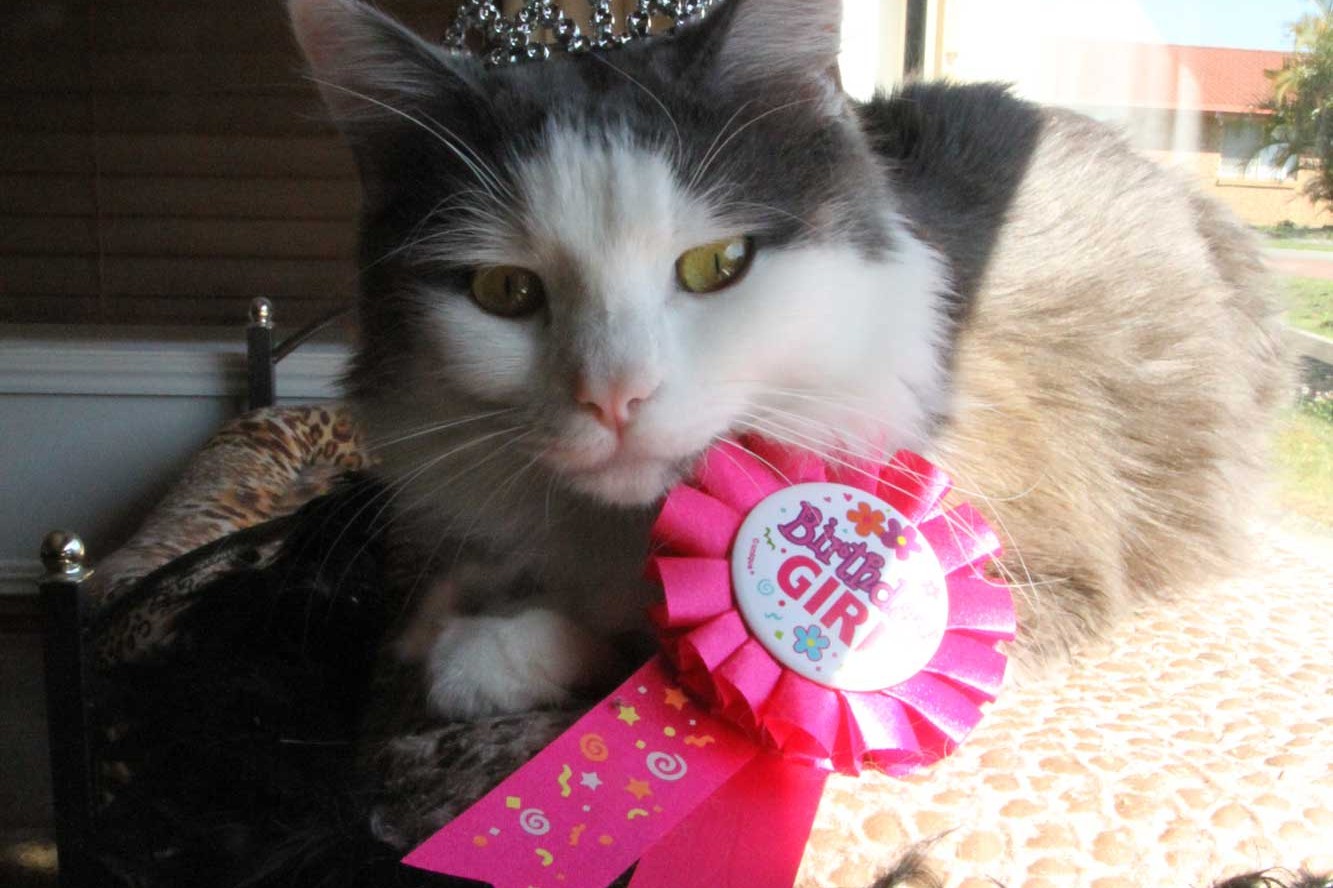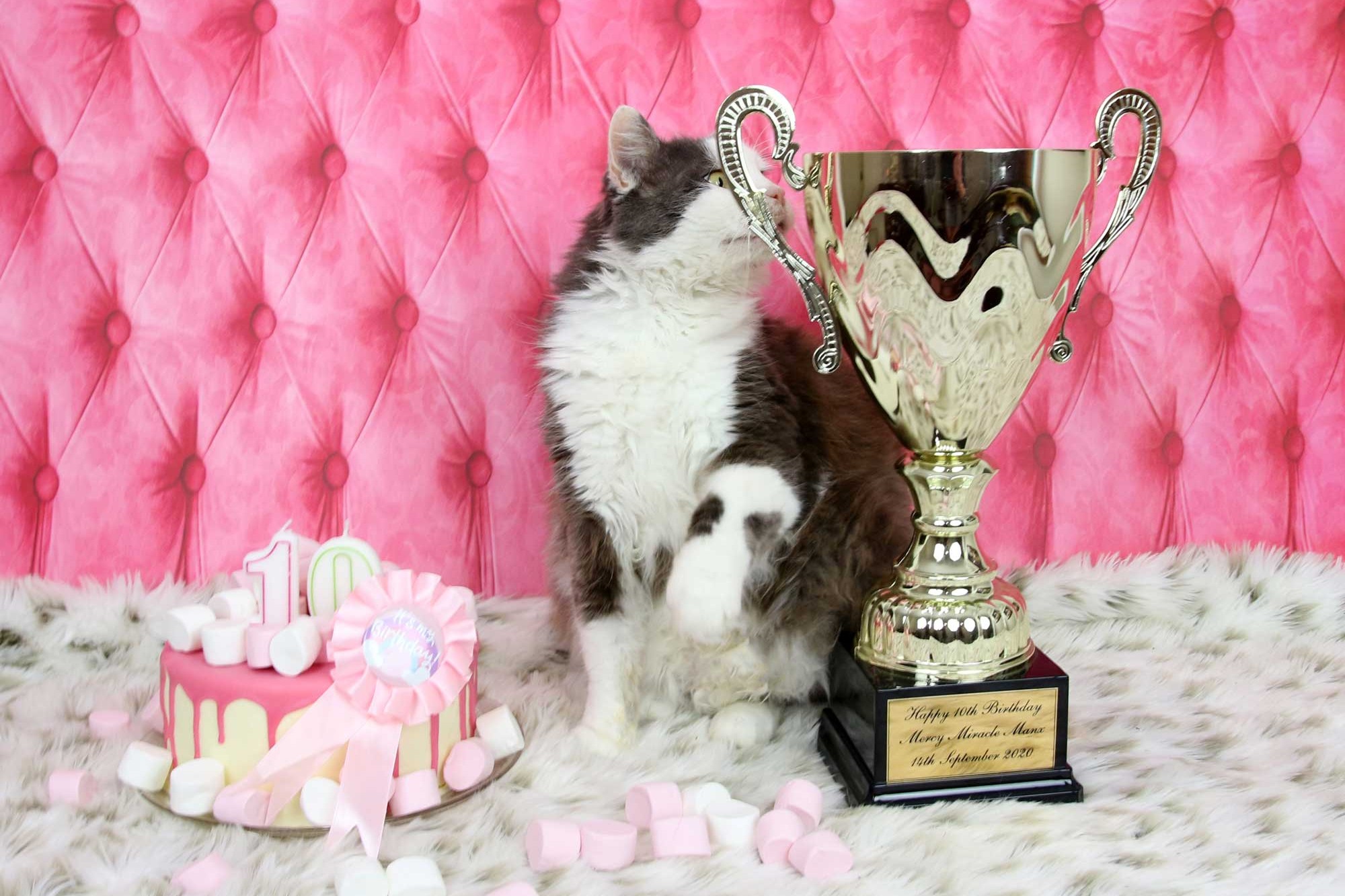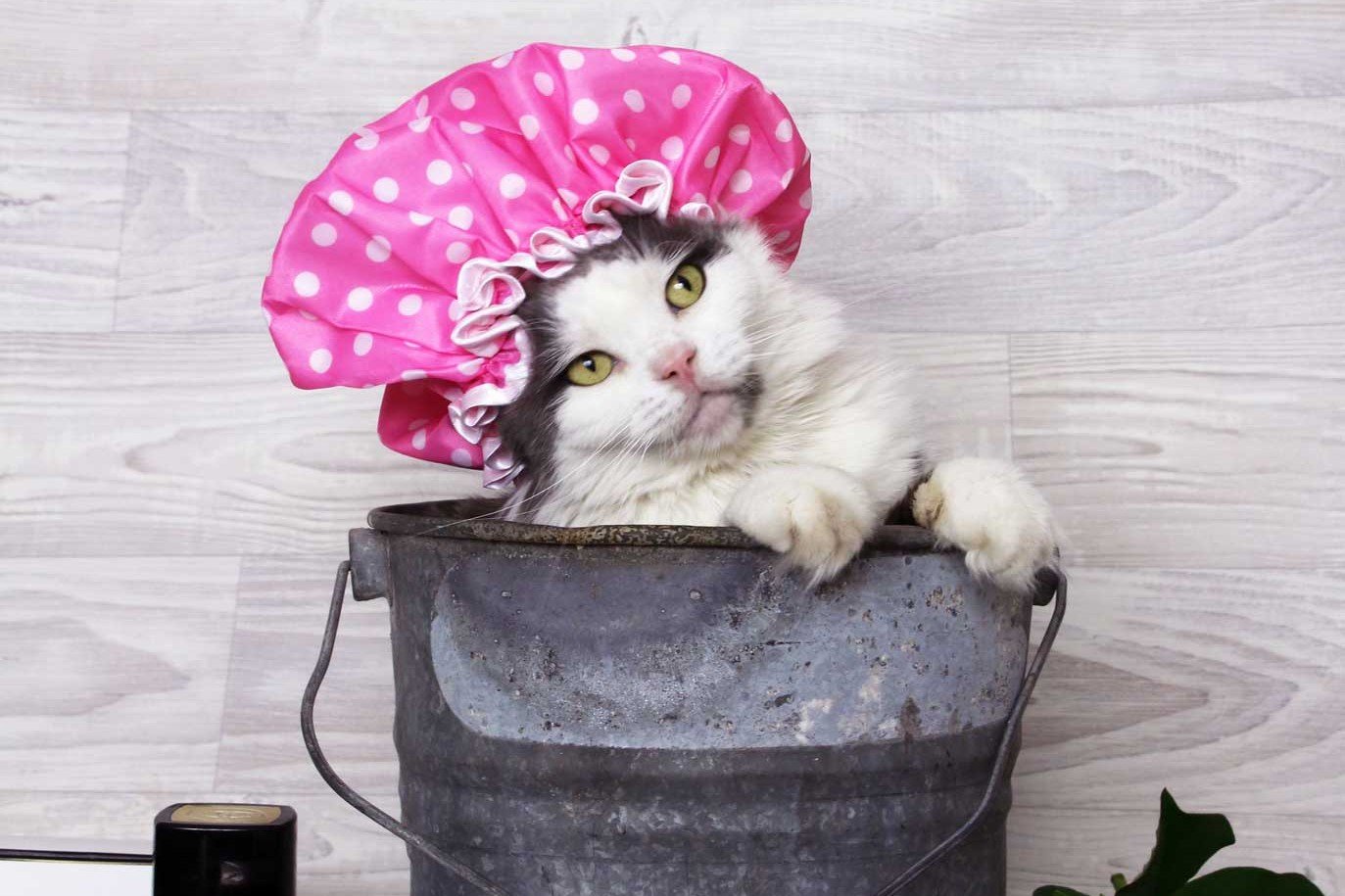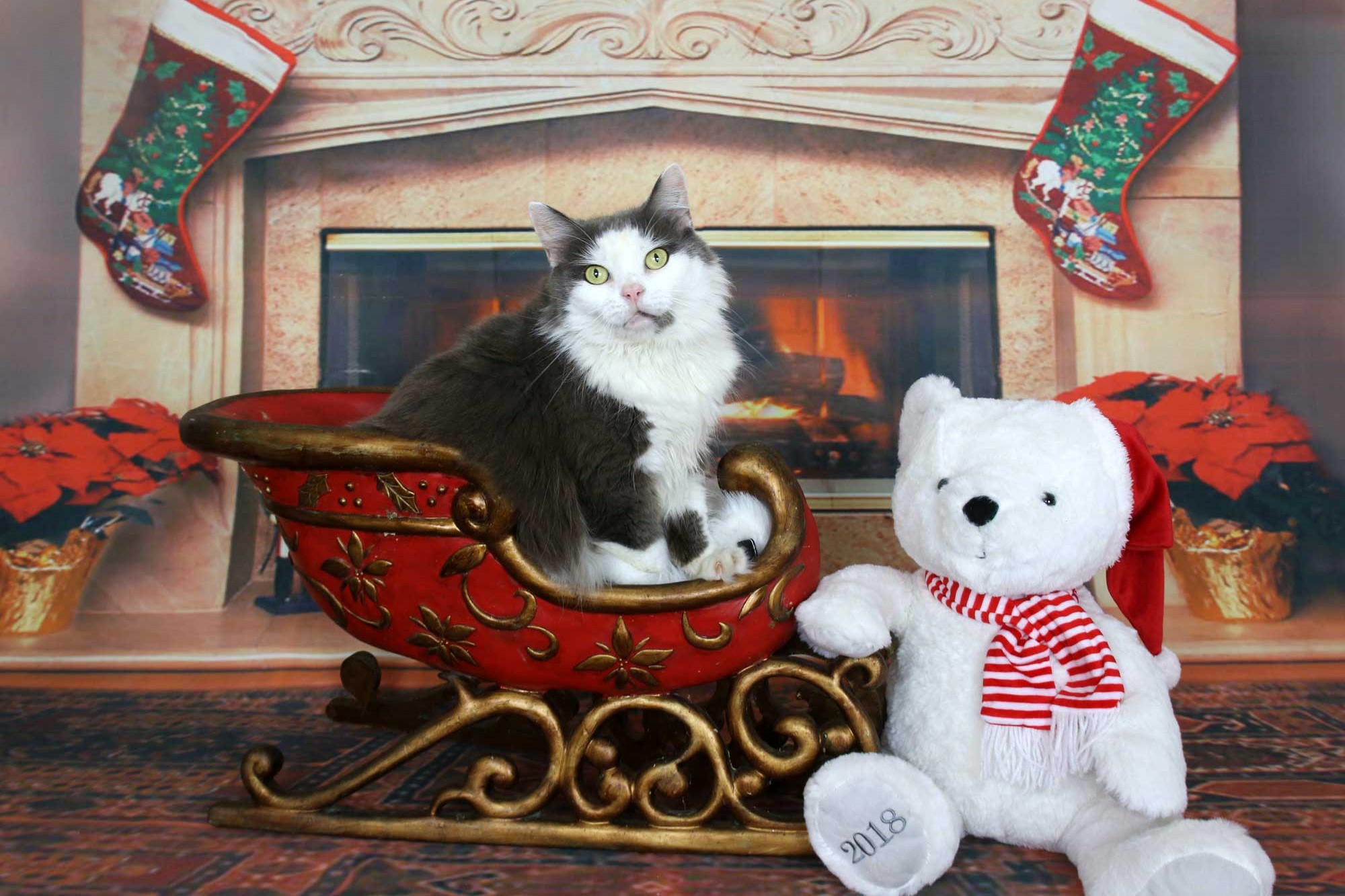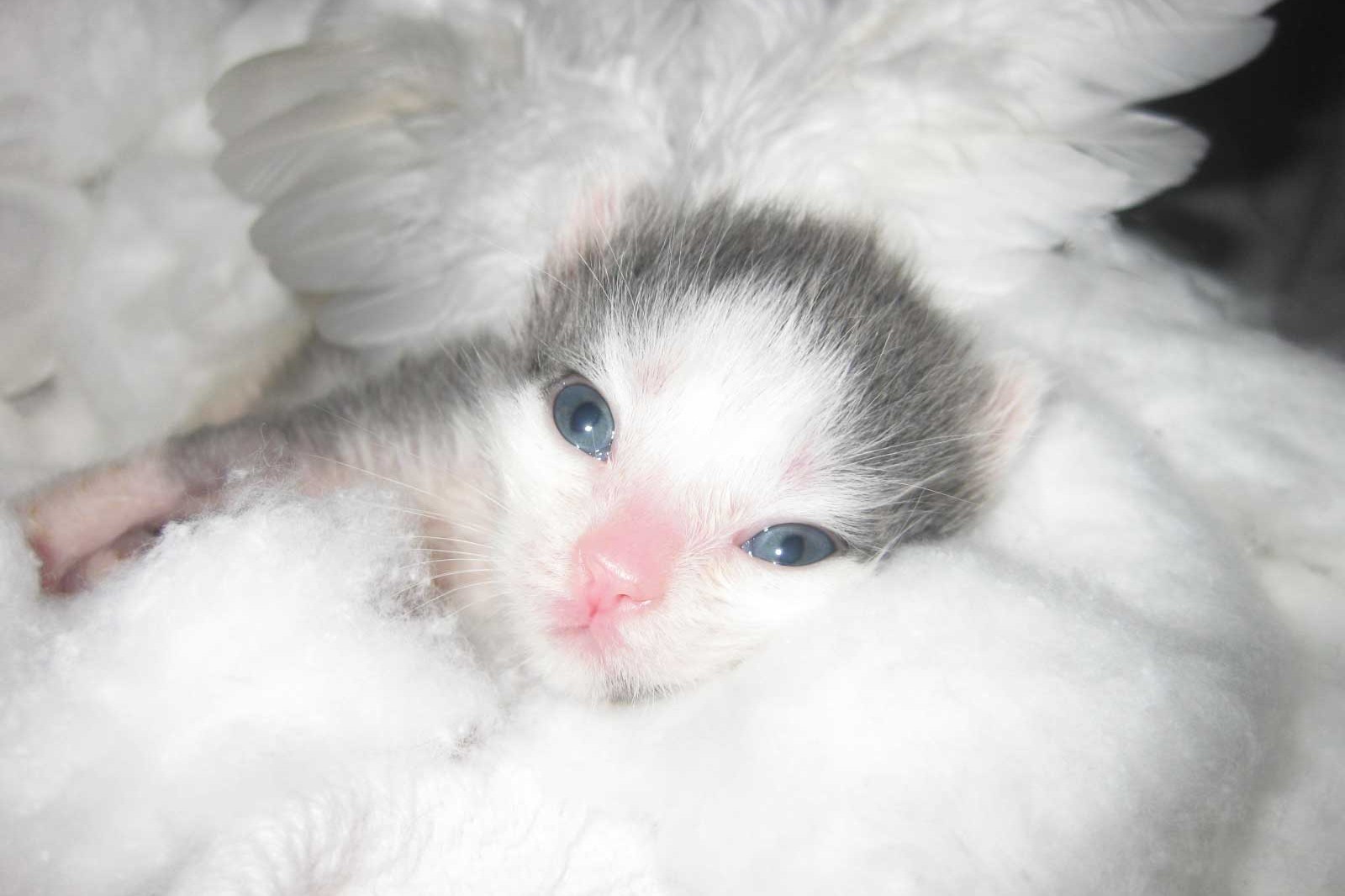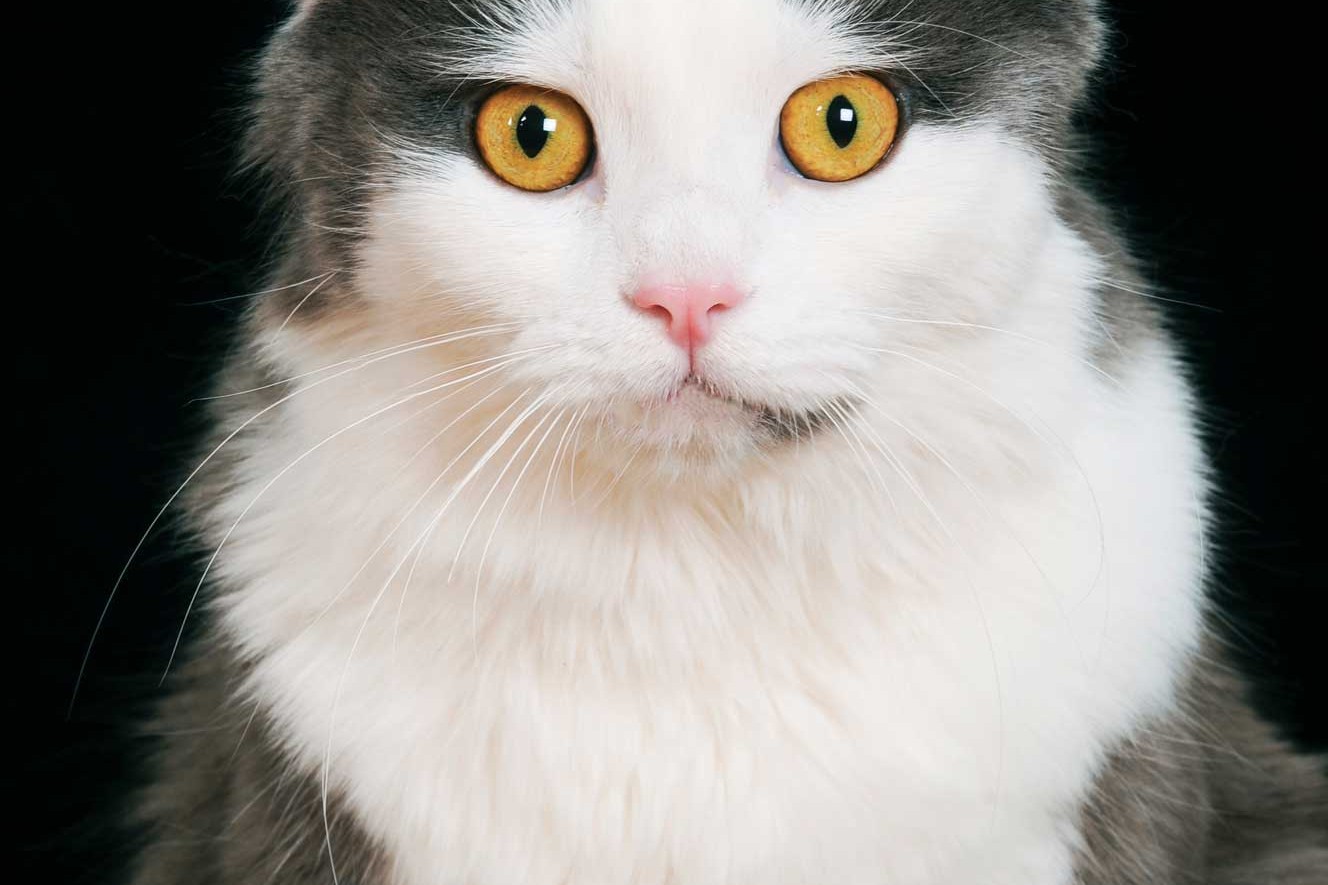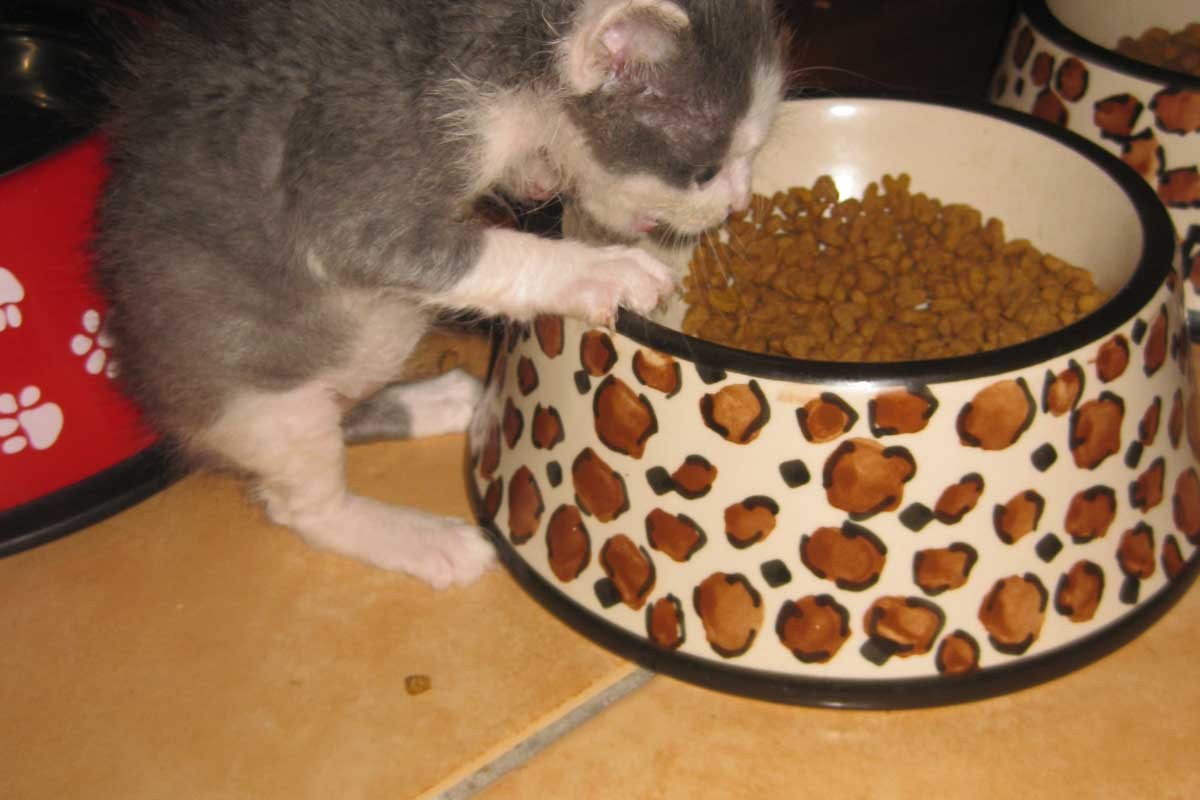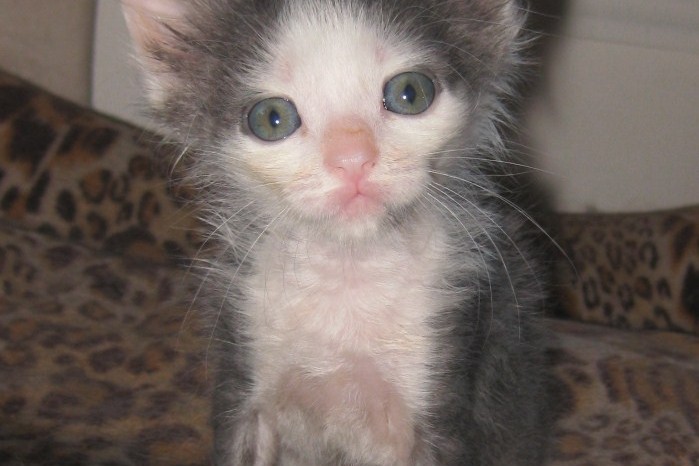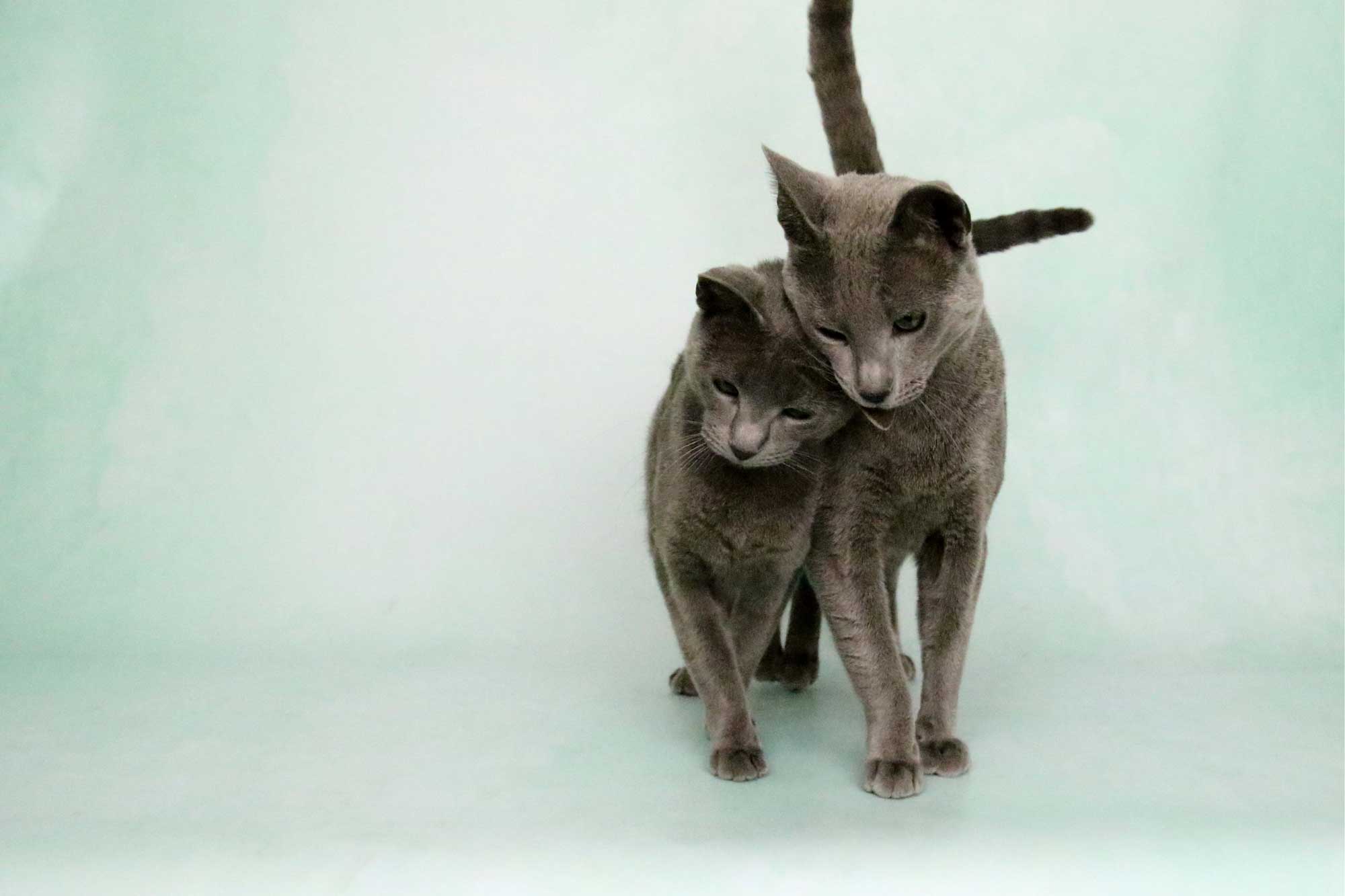Business Of The Year And Micro Business Of The Year
Michael Auld and Lynda Du Vallier are the proud owners of Capalaba Cat Cottage Redland Bay Rd Capalaba.
‘’We are very honoured and grateful for these amazing awards. We would like to thank every pussy cat, every owner and our amazing supporters and audiences for supporting us, voting for us and celebrating every day in pussy cat land with us! This truly is a wonderful achievement. We have worked very hard through 2020, especially through COVID 19, to keep our friends connected, informed, entertained and encouraged. We pivoted and created new initiatives and activities that will now be included in our annual calendar. We look forward to many more years of wonderful cat adventures at the Cottage and more initiatives ahead! Thank you everyone for your continual support.’’
RESILIENCE – DETERMINATION – TRANSFORMATION
Since adopting the cattery in 2017, we have developed it into a ‘Palace for little Kings and Queens’ for your furry feline friends. From the moment you walk into the cattery on a red carpet with golden bollards, chandeliers and specially made ‘royal furniture’ for the cats, you can see this really is a palace!
Michael Auld is a semi-retired veterinarian and we have been breeding and showing pedigreed cats and companion cats for over ten years. Our cats have won hundreds of local and national awards! We LOVE cats!
We currently offer over 25 services for you and your cats! We offer boarding, Pampurrr Packages (cat baths, grooming, nail trims and shaving – hygiene, belly and ’lion clips’), professional cat Photo Sessions with award winning cat photographer Lynda Du Vallier and Christmas photos in Santa’s wonderland, where you can bring kitty to see Santa and have your photo taken (available now). We even have our own ‘Online Pet Cat Show’! A popular feature of Capalaba Cat Cottage is that you can ‘check in’ whilst you are on holidays to see your kitty is happy, as we upload photos and videos daily to our Facebook page.
A Cat A Day Book
Have you an amazing cat that has a very special story?
A beautiful kitten that won your heart?
Do you have a clever cat that does tricks, swims, eats unusual things, sleeps weirdly or on your head, a cat who have unusual markings, a story about how your cat got his name?
Well, now is your chance to make him famous!
Lynda Du Vallier is writing a book…
365 DAYS OF CATS!
Every day you will be able to read a wonderful cat story! How exciting is that!
We are taking submissions now.
What do you need to do:
- Write a story about your cat, up to 500 words. Any topic about your cat.
- Send in a quality photo that will be suitable for printing. We prefer photos taken with a camera.
- Please include your full name, cats’ name, address, phone number and email.
Send your submissions to: acataday@outlook.com
The Story of Mercy Miracle Manx
Once upon a time...
On 14th September 2010, a lady had dropped in to Belmont Rd Vet Surgery (Mike’s practice) a very distressed cat that wasn’t hers. She was having trouble having kittens. The Good Samaritan could not stand to see the cat suffer, so she wanted to pay whatever it took to save the cat. Mike the Vet (also my partner) said that whatever was in there, any kittens, they would not be alive now. So, Mike did an emergency desexing, took out the womb and found a dead kitten. There was another ‘lump’ that was a kitten, not moving. I pestered Mike to open the womb to see if there was any chance of survival. After much pestering, he opened it up. This little kitten was not breathing. She was still pink however, so instinct told me to see what I could do and warm her up. I blew into the kitten’s mouth many times, warmed her and kept doing this for 2 and a half hours!
All the other vets and nurses thought I was wasting my time and the kitten would die. The little body weighed 56 grams, and a usual kitten weighs around 100- 120grams at birth, so chances of survival were slim and if the kitten survived, it could have brain damage for not breathing for so long. Well, two and a half hours later and the kitten was breathing on her own! So, I started bottle feeding her a milk substitute. Kittens need their mother’s milk within the first 24hrs of birth as it has antibodies in it to aid survival and prevent infections, this kitten would not get that.
The kitten was a female and also a little tailless cat. I took her home and stayed up ALL night watching and still rubbing the little body to ensure she stayed alive. The next night I also stayed up and day after day she stayed alive.
Then after a month, the little kitten became sick. She had diahrea and colic and was not gaining weight. I was devastated thinking she may not make it. I have a great friend who is a wildlife carer, who has a humidicrib. My friend took the kitten and put her in that for a few days.
When I saw her to come and collect her, I could not believe my eyes! Was she the same kitten! She had put on 40grams and was eating all her formula! She looked fantastic! I took her home and finally after 7 weeks of a bottle, she decided to eat! I was so excited to see my little girl was starting to grow up! Against all odds, my kitten survived!
I named her ‘Mercy’ because I believe that God had mercy on her to save her. Today she is THE most affectionate little cat I have EVER had! She purrs when you look at her and she thinks I am her mum.
As you can imagine, Mercy is TOTALLY spoilt with love and toys and all the best of foods, she sleeps in our bed. She has brought so much joy to our lives and an amazing feeling to know that we helped save her. She brings tears to my eyes sometimes when I look at her because she is so special.
At the 2011 EKKA, we took Mercy to the show and entered her in the Companion section. Tears of joy ran down my face as she was named Supreme Grand champion Companion of the EKKA! You could not have had a more proud mum that I on that day!
Every year we have a very special birthday party for Mercy and now Mercy even has her own yearly calendar!
As you can see she is also our mascot for Capalaba Cat Cottage, making appearances everywhere! Mercy has also stared in TV commercials, a Netflix production, still shots for advertisements and commercials. She is a very clever girl. In fact Mercy can’t wait to get into our photographic studio and oblige mummy with beautiful photos!
Mercy is the most special girl to us; she was our flower girl at our wedding on November 16th 2019! She even wheeled down the aisle in a beautiful carriage! Enjoy the photos and videos of Mercy throughout the pages.
And of course Mercy has her own Facebook page
Winner of the Redlands Coast Business and Retail Awards 2020
Business Of The Year And Micro Business Of The Year
Michael Auld and Lynda Du Vallier are the proud owners of Capalaba Cat Cottage.
‘’We are very honoured and grateful for these amazing awards. We would like to thank every pussy cat, every owner and our amazing supporters and audiences for supporting us, voting for us and celebrating every day in pussy cat land with us! This truly is a wonderful achievement. We have worked very hard through 2020, especially through Covid 19 to keep our friends connected, informed, entertained and encouraged. We pivoted and created new initiatives and activities that will now be part of our yearly calendar every year. We look forward to many more years of wonderful cat adventures at the Cottage and more initiatives ahead! Thank you everyone for your continual support.’’
RESILIENCE – DETERMINATION – TRANSFORMATION
About The Awards
Redlands Coast Business and Retail Awards 2020
The Redlands Coast Business & Retail Awards is a not for profit event that has grown to become the largest event of its type on the Redland Coast calendar. In 2019, more than 250 businesses participated in the Redland Business and Retail Awards, collecting more than 12,500 votes. The Gala Dinner hosted 760 local business people, coming together to celebrate business excellence. In 2020 there were 500 guests (limited because of Covid-19) at the gala dinner.
Key Objectives of the Awards:
- Recognise excellence within the retail and business community
- Retain spending within Redland City
- Strengthen local businesses by promoting local shopping
- Create and maintain jobs within Redland City
- Promote customer service excellence
- Encourage local businesses to focus on and improve their businesses
- Promote consumer confidence in local business
- Engender pride within our community
- Promote Redland businesses to the local community
The Redlands Coast Business & Retail Awards encourages the highest standards to be maintained, ensuring that business will remain strong and vital in the Redlands.
The Business and Retail Awards Sponsors for 2020:
https://redlandbarawards.com/sponsors
2020 RETAIL FINALISTS & WINNERS
Things to consider when you want to adopt a cat
Having a cat can mean different things to different people. Some want a cat to cuddle and sit on their laps; others are happy to live with a very independent cat which spends most of its time outside and doesn’t want too much human interaction.
What is important is that you try to find a cat that will interact with you if you want it to. All cats are not the same and how each individual cat behaves with you can depend on its inherent personality and early experiences (or lack of experiences), which can make it fearful or confident with people and life in general.
The environment in which you keep a cat is also extremely significant – for example if it lives with many other cats which do not get on, then it will be stressed and will react differently than if it was on its own.
While there is no guaranteed way to choose the perfect cat for you and your lifestyle, understanding your expectations as well as what makes cats tick will help you to bring home a cat that should be able to cope with its new environment and be the pet that you want too.
To care for a cat you will need to:
- Provide plenty of human companionship
- Provide regular, suitable meals with a constant supply of fresh water
- Provide a clean and comfortable bed
- Provide the cat with 1-2 litter trays and if allowed outside, a safe outdoor enclosure. Please do not let your cat out to roam without being with you using a harness or an outdoor safe enclosure..
- Provide a stimulating and safe environment
- Groom him/her regularly. Longhaired cats require daily grooming
- Have him/her desexed as soon as possible
- Vaccinate against the major feline diseases annually
- Worm regularly and provide treatment for fleas
- Take the cat to the vet when he/she shows any sign of illness
- Insure your cat or make sure you can afford the cost of any veterinary treatment he/she may need
How much care and attention does a cat need?
As pets go, cats are relatively low maintenance compared to dogs which need companionship, walking, training etc. However, like any pet, they do need care, and some cats need more care than others. Do you want to spend a lot of time with your cat, do you want it to be demanding, or do you have limited time? Cats can fit into busy, modern lifestyles more easily than dogs, as they are pretty independent, can be left alone much more easily and are more suitable for smaller flats or houses. Cats are often chosen by people who have busy and stressful lifestyles and who want some companionship when they go home to relax.
What do you want from your relationship with a cat? If you’re the kind of person who really needs to have a close relationship with your cat and to be able to handle it and have it interact with you, then you’ll be disappointed if you take on a nervous cat that hides every time you come into the room. You may want to think about one of the pedigree breeds which can be more interactive and perhaps more needy of human company than some moggies. This may however become a problem for the cat if you are out at work all day and only available to give attention on evenings or weekends.
Some cats need to know exactly what’s going to happen when, in order to feel relaxed. Such cats would be quite happy living with an old lady who rarely has visitors and leads a very quiet life, but would probably find it quite stressful living in a home full of kids and other animals with lots of visitors and activity. Other cats, however, might thrive on different interactions with lots of people and fit in perfectly well in a busy household.
If you’re not likely to have the time or inclination to groom a cat on a daily basis, don’t even think of getting a Persian or a cat with a long coat. In pedigree jargon, any cat with a longer coat, aside from a Persian, is called semi-longhaired because the coat is not as full as the Persian’s and does not have such a thick undercoat; however, it is still long and requires grooming. In addition, if you are extremely house-proud, you may not want lots of hair everywhere.
A shorthaired cat is a much easier option, as most cats are fanatical about their coats and keep them in immaculate condition. That’s not to say that they don’t leave hairs around – bear this in mind if you’re thinking of getting a white cat but have dark furniture, or vice versa. Likewise, a cat is quite likely to sharpen its claws indoors, often on the stair carpet, sometimes on the furniture or even on the wallpaper. Whether your cat does this can depend on the cat itself and also the environment you provide for it; however there are things you can do to try and deal with this, but it is best to acknowledge from the outset that your cat is an animal with free will and natural behaviour that may not suit someone who needs to have an immaculate house.
The Russian
Introduction
The sparkling plush “blue” grey coat and brilliant green eyes of the Russian Blue draw immediate attention to this shorthaired breed. But it is the intelligent and playful disposition that makes the Russian Blue a perfect pet for many households. The Russian blue is a striking feline. While being medium sized at maturity, their body is muscular and elegant. They are a friendly, relatively quiet cat, who can be shy with strangers. They are devoted to and affectionate with their loved ones. Sensitive to their owner’s moods. They are also an exceptionally clean cat.
What makes the Russian Blue more than “any other grey cat?” The many years of selective breeding and careful registration of ancestry via pedigrees, has resulted in a breed with a distinctive appearance and a unique personality that sets it apart from other cats.
Origin
The Russian Blue Cat is a naturally occurring breed, which means we will never know its true origin. However, they likely originated somewhere in northwest Russia. One theory is that these sleek kitties descended from the esteemed pets of the Russian czars. Sadly, others speculate that the first Russian Blues lived in the wilderness and were hunted for their prized pelts – such thick, dense fur with unique colouring would have brought in the big money.
In any case, it is believed that Russian sailors befriended the felines sometime around the 1860s and brought them aboard their ships as companions, most notably in the bustling port city of Arkhangelsk. This could explain how the breed came to Great Britain and Northern Europe. Arkhangelsk translates to “Archangel,” which is also why Russian Blue cats are sometimes called Archangel Blues.
History
Once Russian Blue cats made it to Great Britain, the breed took the cat world by storm. In 1875, Russian Blues were shown at one of the world’s first cat shows held at London’s Crystal Palace. They did not win any prizes but left quite an impression – mainly that they were incredibly handsome.
In 1912, around the same time Russian Blues were making their way to the U.S., they were officially recognized as a breed. The Russian Blue had competed in a class including all other blue cats until this time, when they were given their own class. The breed was developed mainly in England and Scandinavia until after World War II.
After World War II, Russian Blues were in decline, but enthusiasts managed to save the bloodline. In Sweden, Finland, and Denmark, they crossbred Russian Blues with Siamese cats to produce slightly longer and more angular kitties. In Great Britain, they crossbred with Bluepoint Siamese and British Blues for thicker, stockier cats. The Siamese and British Blue traits have now largely been bred out. However, we believe, the Russian Blues we know, and love today more closely resemble the original breed.
The Russian Blue was first officially recognised as a breed in Great Britain in 1948. In 1962 Ann Vise, of Myemgay cattery in Sydney, imported the first two Russian Blue cats into Australia from England.
Personality
The Russian Blue has a reputation as a gentle, quiet cat, somewhat shy, but do not get the wrong idea. Like all breeds, personalities vary from cat to cat. Their keen senses and cautious nature may be a throwback to a time when the Russian Blue had to fend for itself and fight for survival. While most Russian Blues are wary around strangers, some are extremely outgoing and friendly and do not seem to know what the word stranger means. Like making a new friend, it usually takes a little effort and time to win its trust and love. Once won over, you have a loyal and very affectionate friend. These cats become extremely attached to their owners. They like a small circle of close friends, so they are not inclined to bond with everyone who enters your home.
Once a Russian Blue settles in, you soon discover what a charming, entertaining creature you have invited into your home. Your Russian Blue will follow you from room to room just to be with you. Often, their favourite place is on your lap, shoulder or just sitting beside you. They show their love for you by rubbing against your head and licking your face. Thoughtful creatures, these cats are sensitive to their surroundings.
While the Russian Blue loves your company, they are capable of entertaining themselves during the day while you are at work or out. They are generally not destructive but move through the house with the grace of a ballerina.
Although Russians are careful when trying something for the first time, they become quite stubborn when they decide they want to do something. They are intelligent cats. Russians never forget. They remember where you put the feather or the food and will often open the cupboard or drawer to get the object of their desire. They love to play and will train you to throw toys that they can retrieve. Russians are great jumpers and go crazy for feathers and other toys.
The Russian does best in a quiet, stable environment. The generally do not like change, and it is especially important to them that meals arrive on time. Count on them to be a faithful alarm clock in the morning, just so they do not miss a meal.
If you take the time to develop a relationship with a Russian Blue, your reward will be a deep bond with this loving cat.
Physical Characteristics
The Russian Blue is a robust breed, with firm muscles and an overall dose of good looks. It is long, slender, and elegant. Mostly referred to as majestic and regal. It is of a medium size, and muscular, but compared to a swimmer in the compactness of its musculature. When it is in full motion and stretched out, one can see that it has a long, graceful neck, but the neck is hidden by thick fur and high set shoulder blades when the cat is sitting, making it look as though it has a short, thick neck.
The Russian Blue’s elegant yet muscular body led one cat judge to proclaim him the “Doberman Pinscher of cats.” They have what’s called a semi-foreign body type, meaning it is moderate in shape, falling somewhere between the short, compact body of breeds such as Persians and the sleek angles of Oriental breeds such as the Siamese.
They are small to moderate-sized cats with an average weight of 3.6 to 6.8 kg when fully grown. Males will typically be larger than females.
The Russian Blue appears bigger than it is because of its double coat, which is the most eye-catching feature of this breed. Dense, silky, and plush, the hair stands out at a 45-degree angle, allowing you to literally trace patterns into it, where they will remain until you smooth your hand over them. The coat is bright blue, preferably lavender at the base (root), darkening along the shaft up to the tips of the guard hairs (protective hairs in the topcoat), which are tipped in silver. The coat shimmers with reflective light. The tail may have a few very dull, almost unnoticeable stripes.
You might think that a Russian Blue would only come in blue, however in Australia, they come in white and black as well as the traditional blue and are known as Russian Cats.
Adding to the captivating physical qualities of this breed is the eye colour. The eyes are blue while the Russian Blue is a kitten, and by four months and even older, there is a bright green ring around the pupil. As the cat matures, the eye colour graduates into a bright, vivid green, aesthetically intensifying the already remarkable blue-silver colouring of the cat. The eyes are wide set and almond shaped, and only slightly slanted at the upper corners, giving the Russian Blue a sweet expression that matches well with its gentle temperament.
One of the more curious and amusing features of the Russian Blue is its “smile.” It has a slightly upturned mouth, which is frequently compared to the enigmatic Mona Lisa smile. A broad muzzle with prominent whisker pads and a unique straight profile.
They have large ears, wide at the base but set high on the head with pointed tips.
Health and Care
There are no specific health problems related to the Russian Blue. It is a genetically sound breed, mainly due to it being a naturally occurring breed. Brushing the coat is not essential but is a nice addition to the weekly routine of other grooming, such as brushing the teeth, clipping nails, cleaning eyes and ears. This breed has a fondness for human company and will sit quite happily while being combed or brushed, since it is spending time with the one it cares for.
One important note to keep in mind with this breed is its love of food. It will eat beyond its need and ask for seconds, making it a sure candidate for weight related conditions if it is allowed to eat as much as it wants. The best prevention is measuring the food and giving it only at assigned times of the day and making sure that everyone in the house knows that they cannot give the cat too many treats or scraps.
It is essential to keep a Russian Blue as an indoors only cat with possible access to a safe, outdoors enclosure to protect them from diseases spread by other cats, attacks by dogs or other creatures, and the other dangers that face cats who go outdoors, such as being hit by a car. Russian Blues who go outdoors also run the risk of being stolen by someone who would like to have such a beautiful cat without paying for it.
Many owners train their Russians on a harness and take them for supervised walks in a safe area.
Children and Other Pets
Russian Blues have a tolerant nature toward children who treat them kindly and respectfully. They will even put up with the clumsy pats given by toddlers, as if they recognize that no harm is meant, and if necessary they will walk away or climb out of reach to escape being hit on the head. That said, the patient and gentle Russian should always be protected from rough treatment, so always supervise very young children when they want to pet the cat.
The Russian Blue is also accepting of other animals, including dogs, as long as they are not chased or menaced by them. Introduce pets slowly and in controlled circumstances to ensure that they learn to get along together.
Allergies
Anecdotal evidence suggests that the Russian Blue may be better tolerated by individuals with mild to moderate allergies. There is speculation that the Russian Blue produces less glycoprotein Fel d1, one source of cat allergies. There is no solid evidence with respect to Fel d1 and the Russian Cat to prove that they produce less of the protein. The thicker coat may also trap more of the allergens closer to the cat’s skin. Glycoprotein is one source of cat allergies, but this does not mean they are suitable to be homed with people allergic to cats as they will still cause the allergy to be affected, only to a lesser degree for short periods of time.
How to train a kitten on a leash
Training a kitten on a lead is a great idea if you want to take him outside for a walk in the garden. Here are a few tips on how to train your kitty to like the lead and harness.
Leash Training
Step 1: Get your cat used to wearing the harness indoors.
Place the harness on your cat without the leash attached. Give him a treat or two with the harness on then slowly take the harness off. Only give treats when the harness is on, do not give treats when the harness is off. Repeat this process while gradually increasing the amount of time your cat wears the harness.
Step 2: Get your cat used to walking on the leash (without tension) indoors.
After your cat is comfortable with the harness, attach the leash to the harness. Begin by allowing your cat to walk around as you follow with the leash loose. After a short time, remove the harness and leash and repeat this process for a few days until your cat is relaxed and freely walking.
Step 3: Get your cat used to leash tension indoors.
While supervising, allow your cat to drag the leash behind him or her while freely moving around your home. This will allow your cat to feel and get comfortable with a little bit of leash tension. Always make sure to supervise this and never leave a leash or harness on an unsupervised cat.
Step 4: Walk your cat indoors.
Put on the harness and leash and follow your cat as in Step 2. After the cat has walked a bit, gently try to lead your cat in another direction. Use treats either dropped on the floor or held in your fingers to lure your cat and then reward for moving if you need to. Reward your cat with praise and treats if he walks on his own, too!
Step 5: Go Outside.
On a dry, temperate day, start by walking your cat to the door, opening the door, and encouraging him to go outside. To help with this, toss a treat one-foot outside the door to lure your cat. If your cat is frightened or hesitant, do not force him to go out. Instead, stop for the day and try again later.
Make sure to bring treats for your cat when walking outside. Keep the time spent outside to a few lovely minutes. When it comes to training, it is far better to end on a positive note than a negative one.
How to travel with a cat in a car
There are times when we need to get kitty into the car! Annual vet checks, travelling to a barding cattery so you can go on holidays or moving house are some examples (http://www.capalabacatcottage.com, https://www.facebook.com/CapalabaCatCottage/).
If you have a cat who likes to travel, you’re one of a few. For most of us, travelling with cats can be a stressful experience. However there are ways to help make them feel more calm and comfortable when travelling in a car.
The first thing to do if you need to get that cat carrier out and your cat does not like it or runs and hides when he sees it, (thinking they are going to the vet), is to find kitty and keep him closed in a room so he cannot run away. THEN when you know where he is, get that cat carrier out!
A good tip to actually get your cat to enjoy the carrier is to leave it available for him, with a blanket in there in ‘normal’ times and so he can go in and out without getting in the car. That way, when you need to use the crate, it is not such a scary experience. They can then sniff it out on their terms, so it’s nice and familiar when you’re ready to go. Try adding soft bedding and their favourite toys, and they may even claim it as a new napping spot.
Also, buy a good a quality carrier, one that is safe, sturdy and comfortable. Ensure it’s big enough for your cat to stand up in and with plenty of airflow. Some cats like to see out so a wired topped one is a good choice. To deter escape artists, check the door can be closed quickly. And if the carrier is an open wire style, place a light throw on top to create a sense of sanctuary if need be. While you’re driving, ensure you keep the carrier secure so it doesn’t slide around and putting a seat belt around it is a good thing. Please note as well that there are hefty fines for travelling with pets that are not restrained.
Spray calming pheromones or play Pet Tunes. These products are designed to calm cats in many situations. Designed specifically to reduce anxiety in pets, a pheromone spray like Feliway can help your cat relax. Simply spray the inside of your cat carrier on the top, bottom and each corner at least 15 minutes before travelling. Learn more about Feliway Spray. Another fabulous product is ‘’Pet Tunes’’ https://thepetcalmer.com/shop. This little music box is proven to calm cats and help with anxiety.
Please hold off feeding your cat before travelling in the car as some cats on a full tummy can get travel sickness, so avoid giving your favourite feline a meal within six hours of travelling, If you’re going a long way, fresh water and a few dry biscuits should tide them over.
Reassure your cat. While the car may be unfamiliar territory for your cat, your voice will be music to their ears. So reassure them with calming words, to let them know you’re right by their side. Avoid loud sounds and loud radio music.
Practice and train! It is a good idea that you train your cat from a young age to use the travel crate and get used to the car. Take them on short trips, even around the block every now and then and by time you need to get kitty in the crate it will be a ‘pawesome’ experience.
Can I introduce a second cat or kitten to my home successfully?
The answer to this question should be yes!
But sometimes introducing a new furry friend to a home that has the ‘’boss’ cat, can take time.
Are you wanting to get a friend for your cat as you are away from home, working, busy? Sometimes this is a great idea as cats generally love to interact with one another and play, have company and snuggle together.
Cats are ‘busy’’ creatures and not only is it entertaining for us to watch cats interacting with one another, it can be good for them.
Is she/he a relaxed and laid back cat or is he/she a ‘dominant’ and more demanding personality? This is important when choosing a new fury friend as the ‘wrong’ mix can have an unwanted outcome and an unhappy first cat.
If you have a dominant cat, it may be best to look at a more submissive, quiet cat that will not tray and ‘take over’. If your first cat is a laid back quiet cat, a suitable temperament may one similar to this.
Cats are territorial and they are the ones that will establish who will be the ‘boss’. Most of the time the first cat is as the home has been his/hers ‘own’ place forever however sometimes the dynamics change and the new cat becomes the ‘boss’.
However they work it out, is ok, as long as they get along.
Having a new cat move in can sometimes take time. This is ok.
Some tips on settling a new cat or kitten in:
1.) Introduce the new one slowly! Please don’t take kitty home and believe that your original cat will fall instantly in love with him/her! It is important to keep them separated for a period of time.
The best way is to put the new cat/ kitten in a small room, maybe a bathroom or laundry, with all he/she needs. The new one will need his/her own litter tray, water, food, scratching post, food and toys. This is also great for the new one as he/she has come from a completely different environment and may be a little scared as well.
Some cats settle in easier than others. If you give the new kitten the entire house to roam, there is more chance it will take a lot longer for him/her to settle in. He/she will hide under furniture and possibly not know where the litter box is as well.
Keep the new kitty in that room for a day, two, three even a week or so if needed. Your first cat will of course ‘’know’’ that there is a new fury friend around but that is ok.
2.) Once your new cat or kitten is home, you can carry out the important process of ‘scent swapping’. To do this, stroke each cat without washing your hands to mix scents and exchange bedding regularly. Also gather scents from the new cat’s head by gently stroking with a soft cloth and dabbing this around your home and furniture to mix with your existing cat’s scent. For this reason, it is useful to delay the cats/kittens from meeting for a few days or even a week. If you have bought in a new cat, let them explore the rest of the house when your first cat is not in those rooms. Keep these initial interactions short at first and try to end on a positive note.
If either your first cat or new cat appears frightened, go back a few steps and keep them apart for a while longer. Continue scent swapping regularly and try again the next day. Do not be surprised if the two cats hiss and growl for a time period. This is normal and part of their territorial nature. If you keep these controlled, short meetings up regularly you should see an increase in both cats confidence and a reduction in the ‘’hissing’ ’as they become more familiar with each other, but if you don’t and are concerned about either cat’s safety, then it’s important to seek professional help or take further time for the introduction.
As things progress in the right direction, you can allow the two cats to interact more freely, but until you are sure they have become good friends, be present with them at all times. As all goes well and both cats are comfortable with each other you should see them start to bond and become friends.
3.) Ensure that your first cat continues to get the most attention. For example, always feed your original cat first and the new cat next. This is very important to prevent your first cat getting jealous and fearful that he/ she is now not your number one! If your first gets fed at 6am, continue that routine. The same rule applied to your play time and brush time with your first cat. Try not to change his/her routine too much.
There is no specific time frame that the cats will settle together, so please be patient and enjoy the process! Oh and take lots of photos!
Three ways to own a happy & healthy cat that loves you!
1. Keep your kitty indoors
If you train a kitten to stay indoors from a young age, he or she should not want to go outside hunting. The main thing is to provide plenty of entertainment for your cat in the home. Scratching posts, toys, boxes and beds are a great source of entertainment, especially if you are out for the day. Keeping your kitty indoors is important to protect him or her from parasites and environmental dangers, cars, getting lost, stolen or hurt. Indoor cats are usually healthier, too, which saves on veterinary bills for treatment of contagious diseases, parasites, and abscesses from fights with other animals. While it is true that cats enjoy sunshine, fresh air, and exercise, they do not need to go outside to be satisfied. Some cats can be taught to wear a harness, so they can go on a lead and walk supervised in the garden. If you have tried introducing your cat to the harness and you have been met with overwhelming resistance you may wish to consider the use of an outdoor enclosure, with a roof to prevent escape or have the sides angled inward at the top to prevent climbing over. Another option, if your housing situation can accommodate this, is to have two cats growing up together so they keep one another company and can play together. There are also many techniques that make it quite easy to introduce a new cat into a home where your cat has been the only cat.
2. Spay and neuter your cats
Entire cats are driven by hormones to try to escape outside to find a mate. By speying and neautering, you eliminate this added stress on your cat while at the same time minimizing the allure of the outdoors and chance of contributing to the unwanted cat population. Some people think that allowing your female cat to have one litter of kittens will make her a better natured cat, this is not so. Early age desexing is not harmful and will not only help your kitten settle into a wonderful new life, but the health risks for allowing her to ‘come into season’, find a male cat outside that could possibly carry diseases and have to birth kittens, will be eliminated. The other important aspect to bear in mind is that unless you are an ‘experienced’ or ‘registered’ breeder (in a cat society) of cats and know what to do with birthing and raising kittens, you are more likely to have concerns and complications that are dangerous to the mother cat’s health and the health of her kittens. These issues may lead to terrible health or even death of mother or kittens. There are considerable costs involved in breeding kittens that many people are not aware of. If you find yourself with a mother cat that has gifted you with some kittens, by all means make her comfortable and secure in a warm place and seek advice of how to raise these babies and find them loving homes. Ideally the kittens will need to be vet checked, wormed, flea treated, vaccinated, microchipped and desexed. There are rescue groups and vets that can certainly assist with information of what to do and help find the kittens good and loving homes. Breeding cats is not for the feint hearted and best to be left to the ‘experts’.
3. Love your cat! Domesticated cats crave human attention
It sounds simple but spending time each day, playing with him/her, cuddling, belly rubs, patting, brushing, talking, sitting with them and talking to them will help make a happy cat! Indoor cats do need access to activity that will stimulate both their mind and their body and provide the exercise that they would naturally engage in if they were out and about as well as interaction with their owners. There is no doubt that cats know how to get our attention. They ‘speak’ to us, giving a ‘solicitation purr’ to get their owner’s attention and to receive food. Cats may also use other subtle ways of interacting with us and we can use these to build the bond between us. If you are a cat owner, you will know that a cat seems to know ‘how you are feeling’, if you need more cuddles and attention from them today. Cats are extremely observant creatures, which means they may be picking up on habits you didn’t even know you had—especially when your emotions are running high or low. Even something like crying or laughing can be linked to some sort of action that benefits the cat—petting or praise, for example—that they’ll pick up on! Your cat can be a great coping mechanism for getting you past your blue mood. If you’re down in the dumps, don’t be afraid to give your cat some love—chances are, they’ll find you the next time you need a little TLC, even if it is for their own selfish purpose!


































